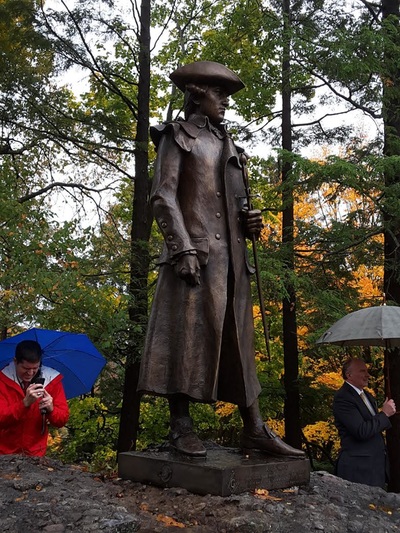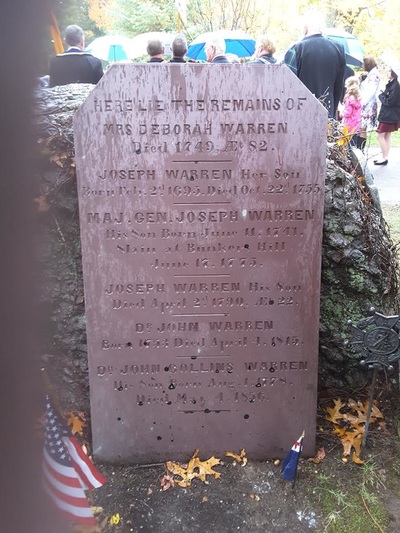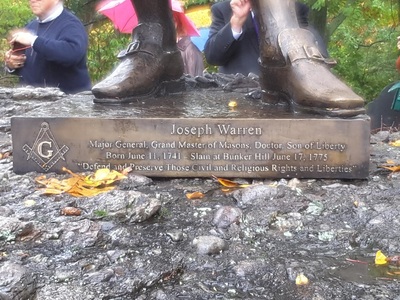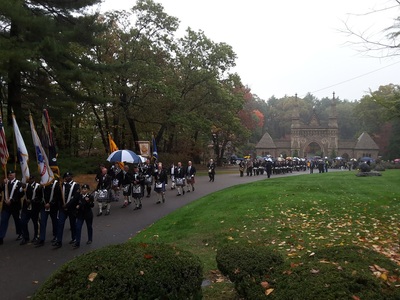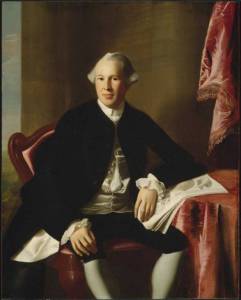- Guided Tours
- Self Guide Smartphone Tour
-
Revere Bells Index
- The Stickney Revere Bell Listings of 1976
- Ashby Mass. Revere Bell
- Paul Revere Bell of Beverly
- Revere Bells in Boston >
- California's 2 Paul Revere Bells
- Paul Revere & Son's Bell Westborough Massachusetts
- Falmouth, Massachusetts
- Revere Bell Fredericksburg VA
- Revere Bell Hampton NH
- First Parish Church of Kennebunk
- Revere Bells in Maine
- Revere Bell in Mansfield
- Revere Bell of Michigan
- Revere Salem Mass Bell
- Roxbury First Unitariarn Universalist Church and their Revere Bell
- Revere & Son Bell, Savannah Georgia
- Singapore Revere Bell
- Tuscaloosa Bell >
- Revere Bells Lost in Time
- Revere Bells Washington DC
- Revere Bell in Wakefield, Mass
- Revere Bells Woodstock VT
-
Bostonians
- Edward F Alexander of The Harvard 20th Civil War Regiment
- Polly Baker
- John Wilkes Booth
- The Mad Hatter, Thomas, Boston Corbett who Killed John Wilkes Booth
- Richard-Henry-Dana-Jr
- James Franklin
- Benjamin Harris of Publick Occurrences
- Oliver Wendell Holmes, Jr.
- William Lloyd Garrison
- USS Thomas Hudner DDG116
- Edward Hutchinson Robbins Revere
- Amos Lincoln
- King Philip
- Mayor's of Boston
- Mum Bett & Theodore Sedgwick
- James Otis
- Paul Joseph Revere
- Reverend Larkin's Horse
- John Rowe >
- Be Proud to be Called a Lucy Stoner
- Rachel Wall , Pirate
- Paul Revere the Coroner of Boston
- Deborah Sampson
- Who was Mrs. Silence Dogood?
- Dr. Joseph Warren's Dedication
- History Blog
- Lilja's of Natick
-
Collage of Boston
- 4th of July Parade, Bristol RI
- Boston Harbor
- The Customs House
- Forest Hills Cemetery
- Georges Island
- Nonviolent Monument to Peace - Sherborn
- The Battle Road
- Skate bike and scooter park
- Cassin Young & USS Cassin Young
- MIT
- Historic Charles River
- The Roxbury Standpipe on Fort Hill
- John & Abigail Adams National Park
- Boston's Racial History - Ante-Bellum
- New Page
On October 22, 2016, the Sixth District Freemasons(1) of Massachusetts, unveiled a statue to Major General Dr. Joseph Warren, deceased two-hundred and forty-one years ago. The images above are from the actual ceremony. They barely convey the enduring love all Freemasons have for Dr. Warren.
Freemasons are the oldest fraternal organization in America. Charitable work is today's foundation of Freemasonry. Freemasonry was born from the stonemasons of the middle-ages. Boston's Freemasonry reaches back to Ireland and Scotland for its authenticity. They were the first lodge established in North American, 1733. The Boston Freeman's 18th Century membership list included many individuals chiefly responsible for making us a nation; James Otis, Dr. Joseph Warren, Paul Revere, John Hancock, Nathaniel Greene, John Paul Jones, Jeremiah Gridley and William Dawes. We shouldn't leave out George Washington and Ben Franklin that had significant roles in other Freemason Lodges, Boston's history and this nation's creation. Footnotes below provide additional information on several individuals mentioned above.
Here is a brief history of Dr. Warren.
- Born on June 11, 1741 and shot through the head in the last seconds of the Battle of Bunker Hill, and abused further to make recognition near impossible but for his then eloquent clothing, that was almost immediately removed as a souvenir.
- A graduate of Harvard at 18 and a doctor by 22.
- Dr. Warren orchestrated the rides of April 18th, 1775, by Paul Revere and William Dawes, that alerted the countryside that the “Regulars are out”.
- As a Colonial surgeon of Boston, none was more meticulous, clean and handsome or more eloquent in his writings and speeches on independence.
- He was a most eligible widower, perhaps courting one of Paul Revere’s sisters.
- Dr. Warren penned articles under the name of “True patriot”, in 1767, in protest of the “Townshend Acts.” Our Boston Massacre Tour describes in detail the sequence of events triggered by the five acts termed the “Townshend Acts” to the massacre that began the walk to our revolution. Further information is available here; http://www.walkbostonhistory.com/the-boston-massacre-tour.html
- Joseph Warren's portrait of 1765, by John Singleton Copley is the last image above, provided by Boston’s Museum of Fine Arts.
Three years before he died at the Battle of Bunker Hill, his wife died leaving him with four children.
Dr. Warren was a devoted freemason and became the Grand Master of the Grand Lodge of Massachusetts be-friending a fellow mason, Paul Revere. Here began an association of spies that fostered the closest of friendships.
Dr. Warren performed autopsies, including that of young Christopher Seider, in February 1770, murdered by a tory days before the Boston Massacre. Christopher Seider’s death dramatically accelerated the hostilities between Colonist and British soldiers. An event that is discussed at length during our Boston Massacre tour. http://www.walkbostonhistory.com/the-boston-massacre-tour.html
Days before the Battle of Bunker Hill Dr. Warren was appointed a Major General in the colonial militia. He was one of the few Sons of Liberty to remain in occupied Boston after the Battle of Lexington and Concord of April 19, 1775. His arrest seemed imminent. With Boston garrisoned by the British, he was the last to slip out of Boston on June 17, 1775, and nearly last to die on Bunker Hill. He arrived between the second and third frontal assault by the British. He grabbed musket, powder and shot from a retreating minuteman and fought to his death as a common soldier.
His corpse was visited by many British officers and soldiers including Generals William Howe (who was on the field the entire battle) and General John Burgoyne who witnessed the battle from Boston. They all needed to see for themselves that such a vital colonial patriot was lost to the cause.
Nine months after his crude burial on Bunker Hill (actually Breed's Hill), the colonial militia regained control of Bunker Hill as the British occupation force sailed out of Boston Harbor. All those buried by the British Army were raised up for proper interment. Paul Revere was asked to confirm Dr. Warren’s identity. The corpse was exposed to the elements and abused by the occupying British force. Paul Revere confirmed Dr. Warren’s remains by inspecting the false teeth he made and the unique silver wire adaptor; an improvisation Paul specifically did for Dr. Warren.
Dr. Warren’s remains, were relocated two more times, finally resting at Forest Hills Cemetery in 1855. The large rock that supports his newly dedicated sculpture is the accumulation of glacial dust many thousands of years in the making called puddingstone and was chosen by the Warren family.
Our tour will expand on the relationship between Paul Revere and Dr. Warren, each a political, military and intelligence bridge to the American Revolution. This tour incorporates many of the historical sites on the Freedom Trail and additionally highlights Paul Revere's worth to the nation beyond his midnight ride.
Footnotes:
1.. The 6th Masonic District is comprised of seven Lodges meeting in Norwood and Westwood. The Lodges meeting in Norwood are: Lafayette Dover, Orient and Union, the Lodges meeting in Westwood are: Celestial, Prospect, Rabboni and West Roxbury / Dorchester. The original communities of these various Lodges included: Dedham, Dorchester, Dover, East Boston, Hyde Park, Jamaica Plain, Norwood, Roslindale, Roxbury and West Roxbury.
2. Jeremy Gridley, A Grand Master, Lawyer: he trained James Otis and, John Adams to pass the law bar and become lawyers.,
3. James Otis, Opposed the Writs of Assistance Act permitting British Customs officials to inspect any house or business for smuggled goods.
He coined the term "taxation without representation is tyranny".
4. Nathaniel Greene, a Rhode Island native that became George Washington's most reliable and longest serving general.
- Guided Tours
- Self Guide Smartphone Tour
-
Revere Bells Index
- The Stickney Revere Bell Listings of 1976
- Ashby Mass. Revere Bell
- Paul Revere Bell of Beverly
- Revere Bells in Boston >
- California's 2 Paul Revere Bells
- Paul Revere & Son's Bell Westborough Massachusetts
- Falmouth, Massachusetts
- Revere Bell Fredericksburg VA
- Revere Bell Hampton NH
- First Parish Church of Kennebunk
- Revere Bells in Maine
- Revere Bell in Mansfield
- Revere Bell of Michigan
- Revere Salem Mass Bell
- Roxbury First Unitariarn Universalist Church and their Revere Bell
- Revere & Son Bell, Savannah Georgia
- Singapore Revere Bell
- Tuscaloosa Bell >
- Revere Bells Lost in Time
- Revere Bells Washington DC
- Revere Bell in Wakefield, Mass
- Revere Bells Woodstock VT
-
Bostonians
- Edward F Alexander of The Harvard 20th Civil War Regiment
- Polly Baker
- John Wilkes Booth
- The Mad Hatter, Thomas, Boston Corbett who Killed John Wilkes Booth
- Richard-Henry-Dana-Jr
- James Franklin
- Benjamin Harris of Publick Occurrences
- Oliver Wendell Holmes, Jr.
- William Lloyd Garrison
- USS Thomas Hudner DDG116
- Edward Hutchinson Robbins Revere
- Amos Lincoln
- King Philip
- Mayor's of Boston
- Mum Bett & Theodore Sedgwick
- James Otis
- Paul Joseph Revere
- Reverend Larkin's Horse
- John Rowe >
- Be Proud to be Called a Lucy Stoner
- Rachel Wall , Pirate
- Paul Revere the Coroner of Boston
- Deborah Sampson
- Who was Mrs. Silence Dogood?
- Dr. Joseph Warren's Dedication
- History Blog
- Lilja's of Natick
-
Collage of Boston
- 4th of July Parade, Bristol RI
- Boston Harbor
- The Customs House
- Forest Hills Cemetery
- Georges Island
- Nonviolent Monument to Peace - Sherborn
- The Battle Road
- Skate bike and scooter park
- Cassin Young & USS Cassin Young
- MIT
- Historic Charles River
- The Roxbury Standpipe on Fort Hill
- John & Abigail Adams National Park
- Boston's Racial History - Ante-Bellum
- New Page


